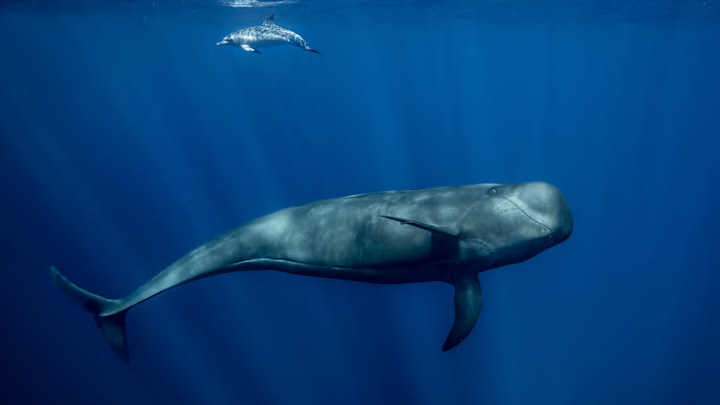Whales and dolphins don’t just share the ocean; they appear to enjoy each other’s company, too. A new paper published in the journal Discover Animals provides insights into the social dynamics of these marine mammals.
Whales and Dolphins Have Fun Together
According to Smithsonian magazine, researchers from Griffith University in Australia pulled nearly 200 videos and photos of whale and dolphin interactions from the internet for their study. The posts were made over 20 years across 17 different countries, though most were from the U.S. and Australia. Additionally, the scientists obtained footage from cameras attached to two humpback whales.
What they found was surprising. Per a statement from the university, the videos showed interactions between six baleen whale species (including humpback, gray, and fin whales) and 13 dolphin species (like bottlenose, common, and Pacific wide-sided dolphins) that appeared to be playful.
You May Also Like:
- 8 Terrifying Creatures that Haunt the Deep Sea
- Newly Identified Manta Ray Species Can Grow as Big as a Van
- Orca Whales Seen Giving Each Other Exfoliating Kelp “Massages”
What’s more is that dolphins were usually the ones to begin these encounters, and humpbacks appeared to be their preferred playmates. It seems that humpbacks are game to goof around, as they were the least likely whale species to show behaviors that may indicate aggression (e.g., tail slaps or headbutts) in repsonse to the dolphins. The cameras on the humpback whales even showed footage of them swimming to the bottom of the ocean with bottlenose dolphins to engage in apparent play.
The most common type of social interaction between dolphins and whales involved the former swimming near the latter’s heads. This action could be perceived as a dolphin’s one-sided way of playing as well as a more efficient mode of swimming.
That said, a quarter of these social interactions appeared to be mutual, implying that playful encounters between whales and dolphins might be more common than scientists previously believed.
Read More About Underwater Animals:
